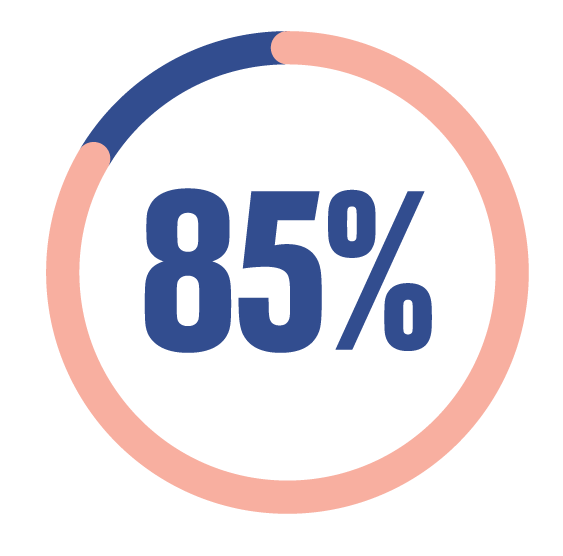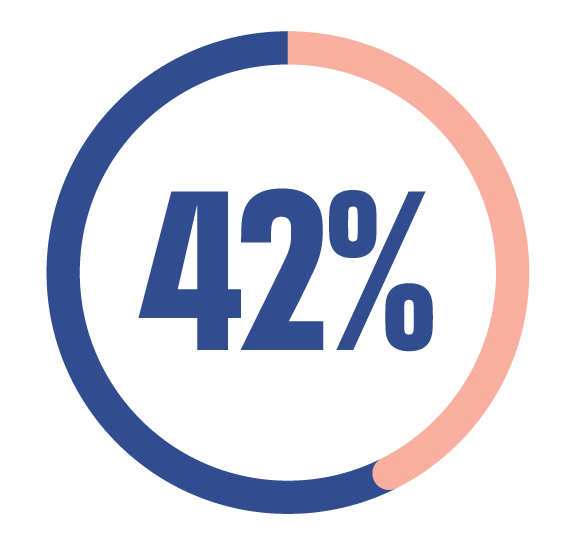Wellness for Everyone: Why Diversity Matters for Self-Care Events
“When looking for new wellness practices, people of color are not seeking out what one might call ‘average’ experiences. They’re looking for wellness practices that invigorate them, that allow them to find community, and that speak to their unique sense of culture and identity. In that way, I suppose, wellness is not the only objective for the event, but it is instead the conduit to a holistic experience beyond the Instagram norm.”
– Maasha Kah, Global Head of Diversity and Inclusion, Eventbrite
Health and wellness have become a defining part of the zeitgeist in Western culture — not to mention a major driver of events. According to Eventbrite data, more than a third (36%) of Americans have attended a health and wellness workshop in the last 12 months.
The wellness industry (now worth $4.2 trillion!) is booming. From yoga festivals to virtual meditation groups to massage pop-ups, opportunities to rejuvenate and connect with oneself abound.
But what you may not be thinking about is this: the wellness world has been highly gentrified. Despite the fact that many wellness practices originated in Eastern cultures, the world of self-care events today skews largely affluent and white.
The Instagram Norm for Wellness Events

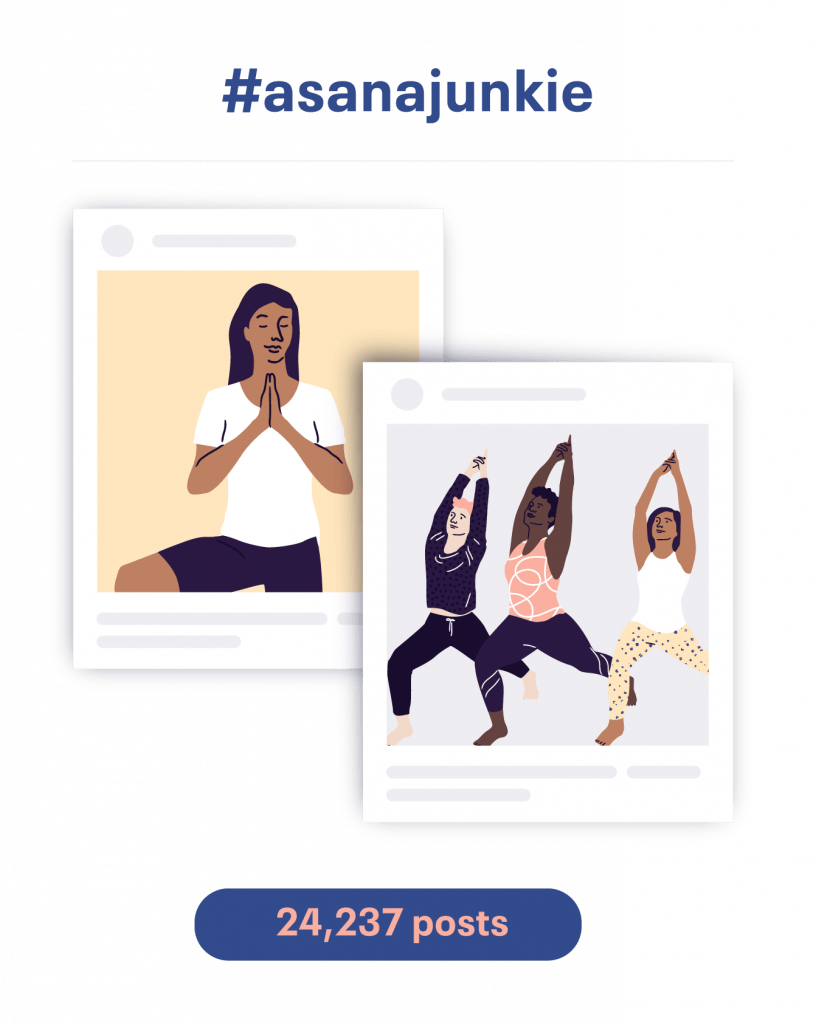
“That upscale white woman is the image of yoga,” said Black Yogis blogrunner Robin Rollan to The Atlantic. “I think a lot of us see yoga as something that’s not for us, because of the lack of imagery [of people of color in yoga]. It is changing, but the image of a white, affluent, thin person is still very entrenched.”
So where’s the disconnect? Are wellness practices just not enticing to, say, middle-aged Latino men or the queer black community? Or is there something else going on here?
For wellness event creators with fresh new ideas that cater to marginalized audiences, there’s ample opportunity to carve out a niche and serve a wider population of people across the demographic spectrum. Having vision and passion is a great start, but in order to carve out a unique brand and reach an active audience, you’re going to need some grit — and business chops.
If you are excited about the idea of creating a meaningful wellness event that challenges the status quo, then read on.
This guide is for…
Event creators with a passion for wellness and a vision of expanding it to new audiences outside the Instagram norm of young, white, and wealthy. Anyone with a strong wellness event idea who is worried it will fall apart under the scrutiny of real business administration, and wondering how to differentiate themselves in a highly saturated market.
What you’ll learn:
- How to create a unique wellness event brand
- The inroads to finding and gaining the trust of your audience
- How to ensure your message remains consistent across your event partnerships
- How to apply the logistics of profitable events to your particular niche
Meet the Experts
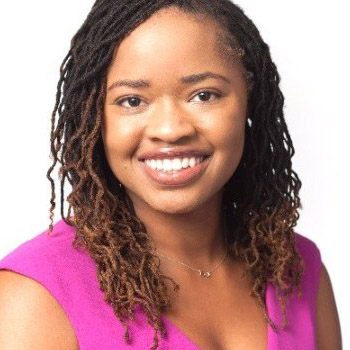
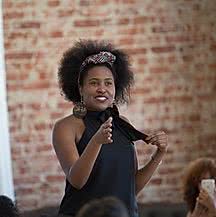
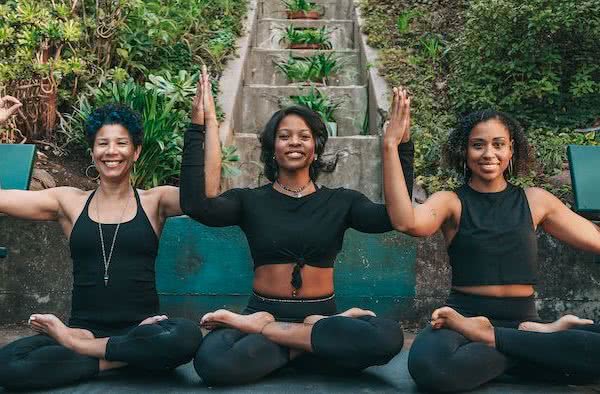

01. Tap into under-explored areas of wellness culture
“We are intentionally creating a space where the majority of students are black and brown people. It’s a completely different energy when you walk into a Black to Yoga class than any other yoga studio I can think of.”
– Kirsten Rogers and Maureen Miller, Co-founders, Black to Yoga
The founders of Black to Yoga are veteran yoga teachers. Over time, Kirsten Rogers, Maureen Miller, and Zenovia Forbes noticed an uncanny pattern in the demographics of most of the classes they taught: they were very white. As black women living in a racially diverse city, they saw room — and a calling — for a different kind of yoga.
So the three launched their Oakland-centered yoga business to bring yoga to black women across the city. Of their yoga classes, Miller says, “It’s very different than any other class I’ve taken or taught. It’s a place I can come be me, and bring what I have: my sense of humor, joy, my sense of lightness, my sense of play. People are happy to be in the space and appreciate the community vibe we’re building.”
Black to Yoga looks to create a space that’s comfortable for the black community. “My playlists are one of the most important parts of my classes,” says Miller. “I get to bring in some funk, some soul, and some old-school hip hop that I might not necessarily bring into the other places I teach. It creates a different energy and vibe, and really sparks a sense of joy in my classes.”
The takeaway
Look for inspiration in your own community or cultural circles. What is missing that you could provide? Just as the founders of Black to Yoga saw an opportunity to change the dominant yoga paradigm in their community, there might be a perfect opportunity awaiting you.
Figure out what makes your offering different than every other workshop, retreat, or festival out there, and build a narrative around that to create your event brand.
Top health and wellness trends for 2020
As we charge into a new decade of wellness, it’s a great time to check in with “predicted wellness trends” from top sources. Here are nine predictions to inspire your upcoming events:
Well + Good’s “Wellness Trends 2020” list:
- Cannabinoids — not just CBD but CBG, CBN, and more
- More types of and wider access to fertility treatments
- Sustainable beauty products without plastic packaging
The Essence “Year of Self Care” list:
- Fitness pop-ups
- Emotional wellness
- Alternative medicine (think acupuncture and acupressure)
Mindbody’s “Wellness Trends to Look Out for in 2020”:
- Spa retreats
- Nutrition/cleansing events
- Wellness festivals
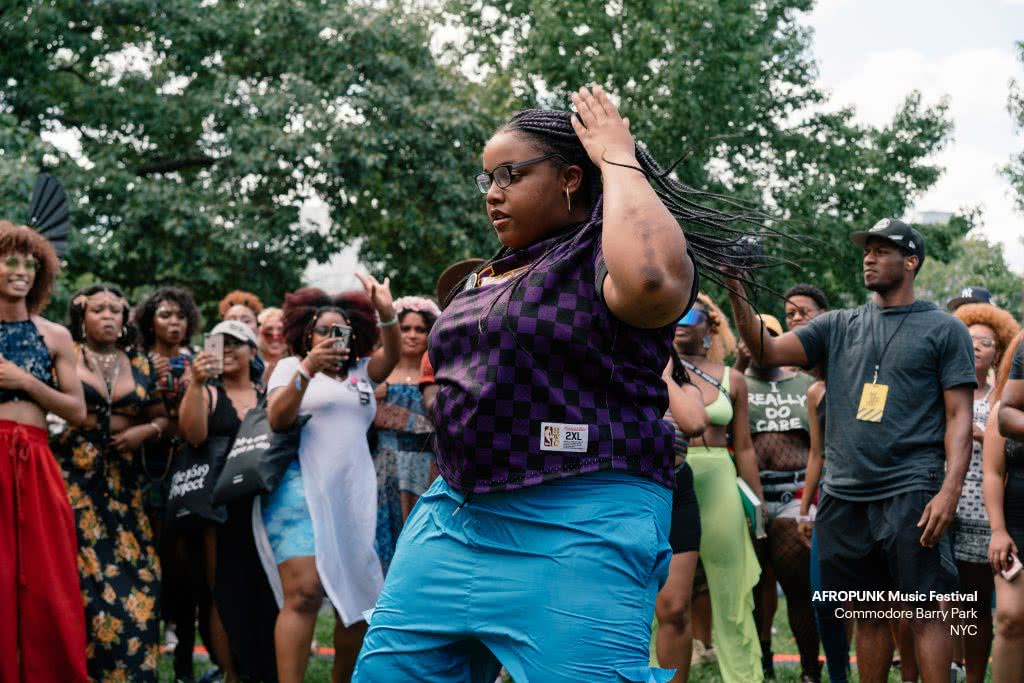
Honoring roots while making it your own
When Christian Dior uses Native American imagery in a fragrance campaign or Katy Perry vogues as a geisha on live television, it may seem like harmless fun. But a lot of people would consider it cultural appropriation. Likewise, when a yoga teacher born and bred in Dayton, Ohio, suddenly starts speaking in an Indian accent and throwing Sanskrit terminology into a power yoga class willy nilly, the question arises:
How much is it okay to borrow from a cultural lineage in the name of wellness?
A lot of wellness modalities originally came from the East. Yoga, meditation, and the healing art of Ayurveda all have origins in ancient India. Acupuncture and feng shui began in China. When we Westernize them, it can be tempting to adopt all the traditional trappings, but beware of inauthenticity in your approach.
Here are some ways to avoid appropriating other cultures in your wellness practice:
- Come from a place of humility, taking the time to learn everything you can so you are fully informed about the history and culture of your modality.
- Be respectful of symbols and iconography that may have important religious or cultural significance. For instance, the Om symbol often used in yoga marketing was originally intended to represent a sacred sound.
- Above all, consider your students and what they need. Speaking in Sanskrit might make you feel more legit, but to your urban American audience it can have an alienating effect, especially if you do not take the time to educate them about its meaning.
Bottom line: Learn about the roots. Respect the path. Then make it your own.
02. Speak to your unique audience directly with your events and marketing
“Black women deserve authentic connections that are healing and spirit led. Our goal is that attendees feel safe, free, and accepted!”
– Tiffany Wright, Co-Founder, Coco Coalition
When you think brunch you might not think “healing vibes,” but that’s exactly what Tiffany Wright, Maereg “Mimo” Haile, and Jasmine McGee had in mind when they first launched Coco Coalition.
In 2015, the trio threw the first “Black and Beautiful Women’s Brunch” with the goal of creating a safe discussion space for black women in the wake of the murder of Sandra Bland. But the conversation has since grown to encompass ways black women can practice self-care in a challenging time and culture. Now a social enterprise, Coco Coalition creates opportunities for women of the African diaspora to connect, grow, and thrive.
At first, Coco Coalition hosted events in Oakland, a community Wright calls a “social-impact space,” where it’s relatively easy to sell out an event within a few weeks based on word of mouth alone. But as the event brand has spread to other US cities such as Los Angeles, Washington DC, Chicago, and Atlanta — and as far as Johannesburg, South Africa and Accra, Ghana — outreach has become more tactical. Here’s what they do:
- The trio lean into Instagram paid ads and partner promotions to get the word out beyond their own circles.
- They partner with affiliates and other types of local promoters to bring in attendees. The founders of Coco Coalition rely on Eventbrite data to track those ticket sales so they know which partners are performing best.
- Most of all, producing events that attendees are passionate about means they come back — and bring friends. In this way, word of mouth remains critical to the marketing strategy.
The takeaway
With any event, finding the audience that aligns with your vision is critical to selling tickets. But for wellness events that cater to a specific audience, you have to get tactical about dialing in on your marketing.
Above all, your goal is to find the people who won’t just sign up to come to your event, but passionately proselytize it to their friends. You want to find your people.

How to promote your wellness event
You’re organizing a crystal-healing class for gender nonbinary folks. Or you’re planning a chakra-balancing workshop for woke men only. Or, say, a Chinese medicine pop-up clinic at your LGBTQ festival.
Here’s how to promote your event idea to an audience that knows exactly what it wants:
- Craft a clear narrative with event name and description
There’s a temptation to be overly creative with event names and descriptions in the wellness industry. But it can be easy to get so creative that you lose track of what you’re trying to say. For instance, “Unearthing the Inner Goddess” has a lyrical ring to it. But it doesn’t exactly tell you what the event is about and who it’s for. “Black and Beautiful Women’s Brunch,” on the other hand, is specific without being too wordy. - Optimize your digital marketing for search engine optimization (SEO)
Make it easy for seekers to find your event. If your event listing and website contain commonly searched keywords, it will rank higher in search results. But don’t just go for generic terms — use terms that cater to specific audiences. - Tease your event to the right people
Take some time to figure out where else your audience spends their time. Perhaps at a niche film festival or an activism event? Then go to those places and hand out flyers — or better yet, offer pop-up events that offer a taste of the experience to come.
- Align with micro-influencers
One of the best ways to get in front of your specific audience is to team up with social media influencers. “Micro-influencers” typically have fewer than 100,000 followers, but it’s often a fierce and devoted following. Find those who are already speaking to the audience you covet, and find out ways to make your partnership mutually beneficial.
To find micro-influencers who vibe with your event, look through Instagram’s “Explore” tab to find posts tagged locally or with relevant hashtags that speak to your audience. Then follow the breadcrumb trail to micro-influencers of interest. But beware of “influencers” who don’t have a lot of engagement on their posts. Look for consistent likes and comments over their follower count.
03. Partner with like-minded people and businesses
“I want to be able to elevate black women and give them a platform and opportunity. Finding ways to help each other brings us together.”
– Leco Madoshi, Founder, Tryb
Tryb is a space for black women to come together and uplift each other by learning about one another’s careers, passions, and interests. Founder Liku Madoshi, a lawyer “by day,” saw room for an event beyond the status quo of career-related gatherings and networking events. Tryb’s monthly events are a powerful wellness resource for black women in the Oakland, California area.
Madoshi’s goal is to create a safe space for black women to come together, but she recognizes that everyone involved in an event is instrumental to the message the event sends. So she thoughtfully sources vendors, partners, venues, and suppliers from the same demographic she serves. “I’ve brought in a mental health professional who’s a black woman,” Madoshi explains. “The vendors at our last brunch were all black women, including the bartender and caterer and the amazing DJ.”
To find the right partners and resources, Madoshi looks within her own community first. She also uses her Instagram page, which has a healthy following, to get the word out.
“When I first started Tryb,” says Madoshi, “I knew I wanted it to be by black women, for black women, and specifically centered around black women.” The connections she engenders at these events help boost the careers of black women in her community as well as the general sense of wellness they feel in being connected to a larger tribe.
The takeaway
If your meal-prep wellness event is sponsored by a greasy fast-food chain, you lose credibility with your audience. You might be saying “I care about your health” with your words, but you’re certainly not saying it with your actions. Hire or partner with the wrong people, and you create brand dissonance (at best) and PR problems (at worst).
Instead, align with partners with values that line up with your own. Tryb’s mission is to uplift a community of black women. As Madoshi notes, “ideally, partnerships will always be with organizations that uplift black women and support the mission of Tryb.”
Be persistent in finding the right partners
Atsuko Bolinguit is the workplace programs coordinator at Eventbrite. Part of her job is to bring in wellness specialists to lead both regularly scheduled and pop-up events for employees. While Bolinguit’s budget for hiring yoga instructors and other wellness advocates is not huge, she’s fortunate to be working in a community with more than its share of wellness talent. Still, she has to be mindful of whom she hires.
“When I’m not sure,” Bolinguit says, “I bring them into the office and do a trial to see how it goes and whether people like it. Especially when it comes to yoga classes, the vibe can be quite different with different teachers. Around here, a lot of people take yoga classes regularly, so they know what they like. I collect feedback to make sure the instructor is the right fit for our culture.”
04. Nail the logistics of a profitable event
Bam Bam Boogie Dance Fitness is a UK-based afrobeat workout event focused on inclusivity and acceptance. Creator Bami Kuteyi strives hard to “make sure that the people in the room feel connected and understand it’s a safe space where they can be whoever they want to be — regardless of what might be going on in their life.”
Designing an event and appealing to an audience are part of her effort, of course. But Kuteyi knows that the logistics are equally important, too. “In the beginning,” says Kuteyi, “I chose a studio that wasn’t well known and was super hard to find, so it caused a barrier to actually getting people to the event.”
She put “easy access” at the top of her wishlist for a new event space, but also looked for an environment that would be clean and well lit, with the audio/video support to enable her to play the Afrobeat tunes pivotal to her event brand. By sticking to these values, and building a judgment-free place to boogie, Kuteyi was able to lure a lot of people out of their comfort zone.
Kuteyi also played around with the timing of her events, quickly learning that Sunday events are not great for fired-up fitness classes. She also learned to examine the competition: “Once I held an event on the very same day as three huge music festivals, so the turnout was very low.”
The takeaway
Without a down-to-earth, tactical approach to executing your event, it will never transition from being a genuinely good idea to a bona fide experience — one that transforms lives and, hopefully, makes money, too. Take a long look at things like your venue, the timing, your competition, and, of course, the technology you’re using to make it all come together.
Streamline your event operation with automation
Yes, #wellnesslife is more about vegetables than vegging out to video games. And it’s been well-documented that excess screen time messes with our sleep and creates anxiety. But the right technology can actually help you streamline your screen usage and free you up for the more meaningful elements of your event planning job.
Using a ticketing platform that integrates with other tools helps you simplify your entire operation. When you choose, look for advanced options like:
- Event distribution — Instantly post your event listing across your social media platforms when you publish your event page
- Sell anywhere — Sell tickets directly through Facebook and other event discovery sites to increase your ticket conversion rates
- Increase marketing ROI — Use tools that optimize and track your ad efforts right from Eventbrite
- Simplify your planning — Apps can help you streamline all sorts of mundane tasks including email marketing, contract signing, and anything else that involves a lot of daily or weekly repetition
With a ticketing platform as a central hub, you can build in automated marketing efforts and share data across systems.
Fired up to bring a new event to the world?
The event world is ready for all kinds of new wellness events that serve all types of different people. If you’re an event creator with innovative ideas and a flair for business, your reward will be making your attendees feel like they’re finally being seen in the wellness world.
Ready to get started on bringing your wellness event to the people who need it? Set up your next wellness event on Eventbrite and put these best practices to the test.
Eventbrite powered 4.7 million events in 2019
Eventbrite brings the world together through live experiences. Nearly one million event creators like you used Eventbrite in 2019 to issue over 309 million tickets and registrations. From music festivals and conventions to pop-up dinners and photography classes, events of all sizes use Eventbrite to transform your vision into an experience people will love.
